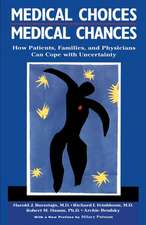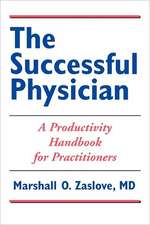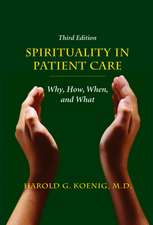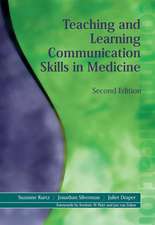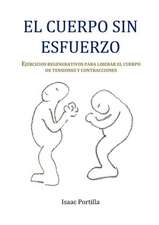Goodman and Snyder's Differential Diagnosis for Physical Therapists: Screening for Referral
Editat de John Heick, Rolando T. Lazaroen Limba Engleză Paperback – 10 oct 2022
Preț: 514.94 lei
Preț vechi: 685.49 lei
-25% Nou
98.53€ • 102.88$ • 81.55£
Carte disponibilă
Livrare economică 07-21 martie
Livrare express 27 februarie-05 martie pentru 220.94 lei
Specificații
ISBN-10: 0323722040
Pagini: 816
Dimensiuni: 216 x 276 x 31 mm
Greutate: 1.67 kg
Ediția:7
Editura: Elsevier
Cuprins
SECTION I
INTRODUCTION TO THE SCREENING PROCESS
1 Introduction to Screening for Referral in Physical Therapy
2 Interviewing as a Screening Tool
3 Pain Types and Viscerogenic Pain Patterns
4 Physical Assessment as a Screening Tool
SECTION II
VISCEROGENIC CAUSES OF NEUROMUSCULOSKELETAL PAIN AND DYSFUNCTION
5 Screening for Hematologic Disease
6 Screening for Cardiovascular Disease
7 Screening for Pulmonary Disease
8 Screening for Gastrointestinal Disease
9 Screening for Hepatic and Biliary Disease
10 Screening for Urogenital Disease
11 Screening for Endocrine and Metabolic Disease
12 Screening for Immunologic Disease
13 Screening for Cancer
SECTION III
SYSTEMIC ORIGINS OF NEUROMUSCULOSKELETAL PAIN AND DYSFUNCTION
14 Screening the Head, Neck, and Back
15 Screening the Sacrum, Sacroiliac, and Pelvis
16 Screening the Lower Quadrant: Buttock, Hip, Groin, Thigh, and Leg
17 Screening the Chest, Breasts, and Ribs
18 Screening the Shoulder and Upper Extremity
Appendices
Descriere
Learn how to screen for systemic and medical conditions, and when to make a physician referral! Goodman and Snyder's Differential Diagnosis for Physical Therapists, 7th Edition helps you identify the signs and symptoms of systemic disease that can mimic neuromusculoskeletal conditions. A step-by-step approach includes the screening tools you need to make an accurate differential diagnosis, describing both red flags and yellow flags as well as risk factors. This edition includes a new Screening for Neurologic Conditions chapter. From an expert team of contributors led by PT educators John Heick and Rolando Lazaro, this guide makes it easier to determine whether to treat or to refer!


